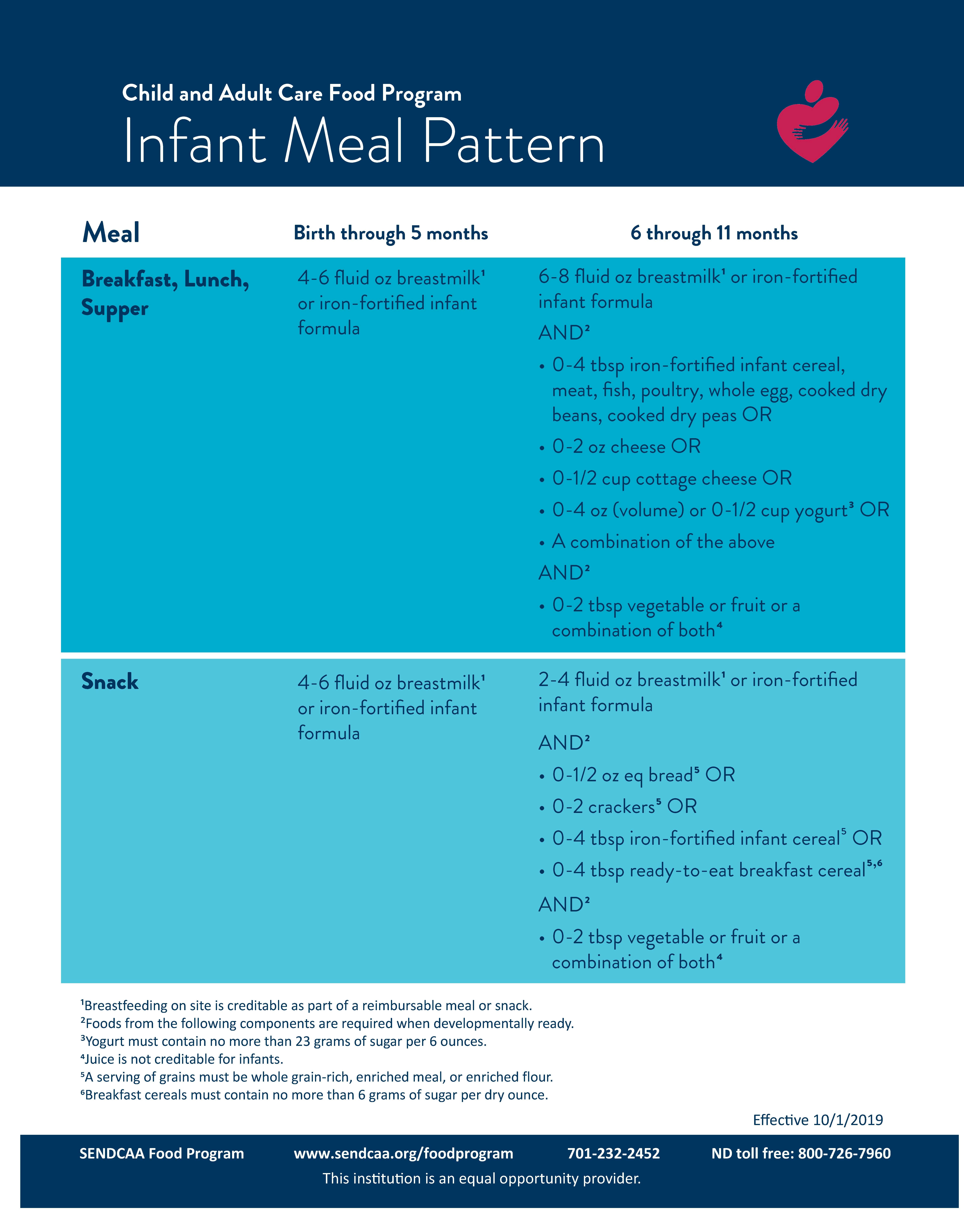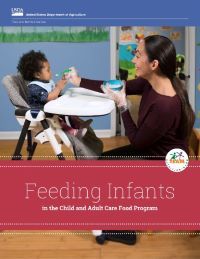Infant Feeding
Infants birth - 5 months are only required to have breastmilk or iron fortifed infant formula for all meals and snacks.
Infants 6 months - 11 months are required to have breastmilk or iron fortified infant formula AND solid (pureed, mashed, diced, etc) foods offered at all meals if developmentally ready. The chart above lists the required components for infants for each meal/snack.
- If a 6-11 month old infant is not yet receiving the full infant meal pattern, documentation must be made on the menu record as to the reason why the required food was not offered to avoid deductions for missing components.
What is Developmental Readiness?
Developmental readiness for solid foods is one of the most important times for infants, parents, and guardians. But, when is an infant ready for solid foods? This question is very important because of the significance of the associated health challenges of introducing infants too early to solid foods.
According to the American Academy of Pediatrics (AAP), introducing solid foods to infants before they are ready increase an infant’s risk of weight gain during the early years and being overweight later in life. Also, when infants are not physically ready to accept solid foods, they are at a higher risk of choking because they have not developed the necessary skills for eating solid foods. Another major challenge of serving solid foods too early is infants may consume less breastmilk or Iron-fortified formula and not get enough essential nutrients for proper growth and development. Therefore, it is important to introduced solid foods to infants around six months when they are developmentally ready to accept them.
There is no single, direct signal to determine when an infant is developmentally ready to accept solid foods. An infants’ readiness depends on his or her rate of development. The AAP provides the following guidelines to help determine when an infant is developmentally ready to accept solid foods:
- The infant is able to sit in a high chair, feeding seat, or infant seat with good head control
- The infant opens his or her mouth when food comes his or her way, may watch others eat, reach for food, and seem eager to be fed
- The infant can move food from a spoon into his or her throat
- The infant has doubled his or her birth weight
As an early childhood professional, working in a Child and Adult Care Food Program ( CACFP) setting, it is important to maintain constant communication with infants’ parents or guardians about when and what solid foods should be served while the infant is in care. You may find it useful when talking to parents and guardians to use the Infant Feeding Guide in the CACFP to help determine if an infant is developmentally ready to begin eating solid foods. Another great way to ensure you are meeting the needs of the infant is to request in writing when you should start serving solid foods to their infant.


